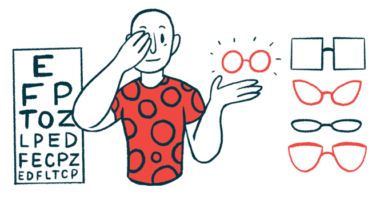
Approved Treatments for Batten Disease
Batten disease is an inherited lysosomal storage disorder characterized by a buildup of waste products inside cells, which interfere with normal cellular function and eventually lead to cell death.
Symptoms of Batten disease include seizures, loss of vision, changes in personality, dementia, and loss of mobility. No cure for the disease exists yet, nor have any disease-modifying therapies been approved, but several treatments are available that can help ease symptoms.
Enzyme Replacement Therapy
Enzyme replacement therapy is used to treat diseases where there are mutations in genes that cause the enzyme they provide instructions for to either malfunction or go missing. This type of therapy can help treat Batten disease by replacing a patient’s missing or deficient enzyme with a fully functional one. This can help restore the proper breakdown of waste material within cells, and prevent cell death. However, enzyme replacement therapy is not a cure for a disease, and requires lifelong administration of the enzyme. If treatment is stopped, disease symptoms will return.
Brineura
Brineura (cerliponase alfa) is the only treatment approved by the U.S. Food and Drug Administration to treat Batten disease It is designed to replace the TPP1 enzyme and slow the loss of walking ability in children with late infantile Batten disease, also know as CLN2 disease.
Anticonvulsants
Anticonvulsants are a group of medicines commonly used to treat seizures in epilepsy, and are useful in controlling seizures in Batten disease. Different classes of anticonvulsants work through different mechanisms. Depending on the type of seizure a patient has, different anticonvulsants may be used. Many Batten disease patients, over the course of their disease, will be given more than one kind of anticonvulsant.
Cerebyx
Cerebyx (fosphenytoin) is an injectable medication that helps control generalized tonic-clonic status epilepticus seizures and is used for the prevention and treatment of seizures occurring during brain surgery. Cerebyx can be used from birth without age limitation.
Diazepam
Diazepam is used in emergency situations to treat prolonged seizures. The medicine is marketed as a tablet under the brand name Valium to treat anxiety disorders, alcohol withdrawal symptoms, and muscle spasms. Rectal diazepam, like Diastat, can be used to treat prolonged seizures caused by Batten disease.
Keppra
Keppra (levetiracetam) is an oral anticonvulsant that can be used to prevent seizures in people with Batten disease. It often is the first medication used to achieve seizure control in juvenile Batten disease patients. Keppra cannot stop a seizure that has already started.
Klonopin
Klonopin (clonazepam) is used to control seizures and panic attacks. It has not been tested in randomized clinical trials for the treatment of Batten disease, but a small study suggests that Batten patients may benefit from this medication.
Lamictal
Lamictal (lamotrigine) is used for the treatment of partial-onset seizures and generalized tonic-clonic seizures in patients 2 and older. Lamictal can also be used to treat seizures in Batten disease, usually in combination with another anticonvulsant such as valproate.
Onfi
Onfi (clobazam) can be prescribed off-label to treat seizures in Batten disease patients, either as a preventive measure or as a rescue medication to stop a seizure, as part of an emergency seizure management plan.
Valproic Acid
Valproic acid, also known as sodium valproate, is commonly used in Batten disease to control seizures either alone or in combination with other anticonvulsants.
Rescue Medications
Rescue medications are fast-acting preparations of anticonvulsant therapies applied to control or end a seizure. Some rescue treatments can be given by parents or caretakers while others must be applied by emergency medical personnel. If rescue medicines are prescribed, this information should be added to the patient’s emergency seizure management plan, along with instructions from the patient’s physician on when and how they should be used. These medications are taken in addition to daily anticonvulsant therapies and are not intended to replace them.
Ativan
Ativan (lorazepam) injection is used as a rescue medication to stop status epilepticus in Batten disease patients. It must be administered by a healthcare professional, and is not intended to replace anticonvulsant medications that have to be taken daily.
Midazolam
Midazolam is an anti-seizure treatment that can be prescribed as a rescue medication for Batten disease. It may be prescribed to people with the disease to stop status epilepticus. It should not be used in place of daily anticonvulsants. It has several modes of administration.
Nayzilam
Nayzilam is a formulation of midazolam administered as a nasal spray for prolonged seizures such as those that occur in Batten disease. It can be administered through the nose without the patient having to breathe deeply, which most patients are incapable of doing during a seizure.
Tranxene T-Tab
Tranxene T-Tab (clorazepate dipotassium) is an added therapy approved by the U.S. Food and Drug Administration for the management of partial seizures. It is an oral tablet and belongs to the class of benzodiazepines. These are used in Batten disease as rescue medications to treat potentially fatal seizure emergencies.




